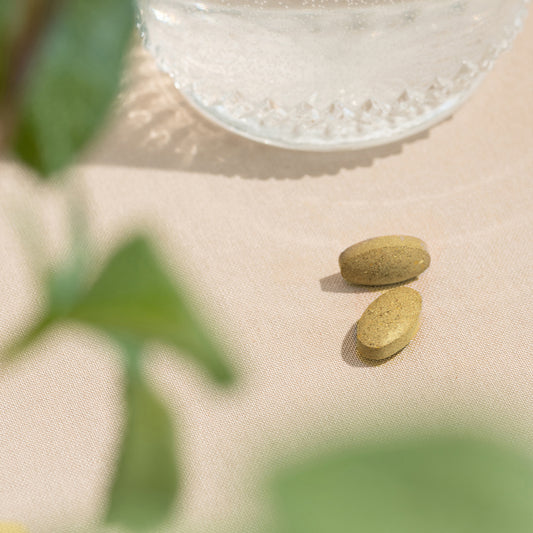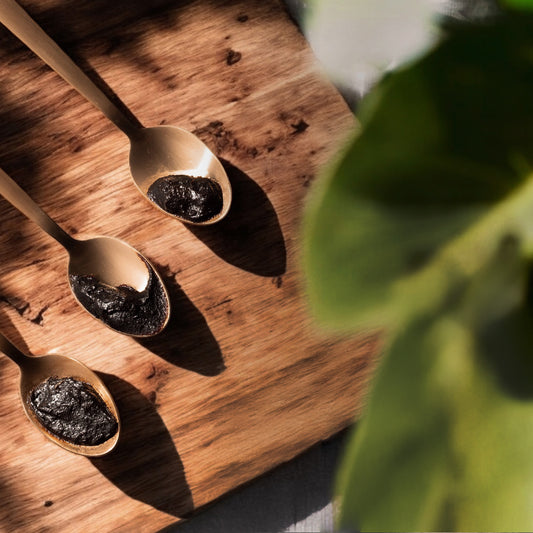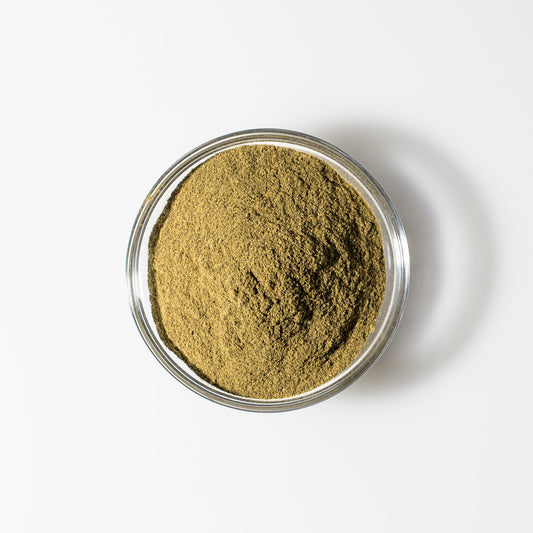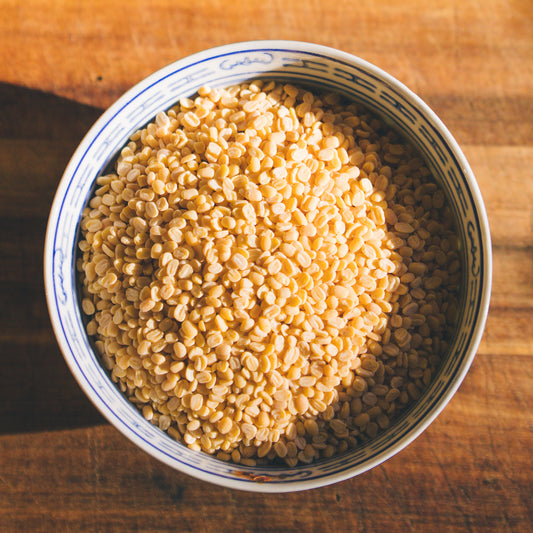Winter Guide
Insulate Your Well-Being with Ayurveda
Ahh. Take a slow, deep breath. Winter is here. Everywhere around you, the natural world is withdrawing and embracing a long, dark season of slumber and dormancy. There is a particular stillness that characterizes winter, and with it comes a subtle invitation to redirect our own energies.
The winter season holds the perfect antidote to the fast-paced mobility of the summer and fall. This is a time to rest, reflect, hold space, vision, hibernate, and withdraw some of your outwardly-focused energy and redirect it inward.
Conversely, the calm, peaceful nature of the winter can also seem a bit oppressive at times and can leave us feeling weighed down, stagnant, or uninspired. Actually, every season has the potential to either bolster or encumber your sense of well-being.
Ayurveda teaches us that like increases like and that opposites balance. As a result, the same experience can affect two different people in dramatically different ways, depending on their inner nature.
Each season ushers in a unique set of qualities that can either balance or aggravate the inner workings of your being. This is why some people relish the heat of the summer while others loathe it, why some can spend an entire winter playing in the snow while others avoid it like the plague. Regardless of who you are, your local climate is a key player in your overall state of balance and well-being.
This is precisely why a seasonal routine is so important and so helpful. By adapting your diet and lifestyle to better accommodate the changing seasons, you can drastically reduce the likelihood of any seasonally induced imbalances and, should they arise, the same strategies will gently coax your body back toward its natural state of equilibrium.
Ayurvedic Tips for Winter Wellness
Ayurveda recognizes winter as a kapha season with strong vata undertones. It is characterized by cold weather, a sense of heaviness, increased moisture (usually in the form of rain or snow), cloud-covered days, and the grounded, slow feeling that sends many animals into hibernation. These are all qualities shared by kapha dosha, which is why winter is considered—primarily—a kapha season.
However, if your climate is exceptionally cold and dry, or if you tend to feel more isolated during the winter months, vata will also be a strong component of your winter season, and you will want to actively keep vata placated as well.
In this guide, we'll explore Ayurveda's general recommendations for winter, starting with the best foods to eat this season. However, we acknowledge that everyone is different, and therefore certain suggestions might not apply to you depending on your Ayurvedic body type or state of balance. This guide is intended as a starting place where you can learn Ayurveda's core concepts about winter before adapting these tips to better support your specific body type.
At the bottom of this guide, you will find links to additional tips and considerations specific to your dosha. You may also find it helpful to familiarize yourself with the common manifestations of both kapha imbalance and vata imbalance so that you can address them quickly if they do arise.
How to Create a Supportive Winter Diet
Winter is actually the season when the digestive fire is strongest. The body requires more fuel to stay warm and healthy in the winter months, and the cold weather forces the fire principle deep into the core of the body—igniting the digestive capacity.
Our bodies, therefore, crave a more substantial, nutritive diet at this time of year, and you will likely find yourself eating larger quantities of food.
A supportive winter diet will be aimed at balancing kapha without increasing vata or vice versa. For many, appropriate winter dietary habits actually come quite naturally.
- You'll want to focus on eating warm, cooked, slightly oily, well-spiced foods, favoring a balance of the six tastes.
- Drink room temperature, hot, or warm beverages and avoid iced or chilled drinks, if possible. You can increase heat and circulation while encouraging clean and clear respiratory passages by drinking a tea boiled for five minutes with ½ teaspoon each of dried ginger, cinnamon, and clove.
- CCF Tea encourages strong digestion and can be taken after meals or sipped throughout the day.
- Hearty, heating vegetables like radishes, cooked spinach, onions, carrots, and other root vegetables are well-received this time of year, as are hot spices like garlic, ginger, black pepper, cayenne, and chili peppers.
- Cooked grains like oatmeal, cornmeal, barley, tapioca, rice, or kitchari make a terrific breakfast, and lunches and dinners of steamed vegetables, whole wheat breads, and mushy soups are ideal. 1
- Legumes are usually good for kapha, but they should be well-cooked, well-spiced, and garnished with a dollop of ghee so as not to aggravate vata.
- If you eat them, winter is also a great time to enjoy eggs (especially poached or hard-boiled) and meats like chicken, turkey, and venison.
- While dairy is best reduced in the winter months, a cup of warm Turmeric Milk before bed can help to encourage sound sleep and should not be overly congesting.

Ideal Winter Foods
The following is a list of winter foods recommended by prominent figures in the Ayurvedic community, including John Douillard and Vasant and Usha Lad:2, 3
Fruits to Favor
|
|
Vegetables to Favor
|
|
Grains to Favor
|
|
Legumes to Favor
|
|
Nuts and Seeds to Favor
|
|
Dairy to Favor
|
|
Animal Products to Favor (If You Eat Them)
|
|
Oils to Favor
|
|
Sweeteners
|
Spices to Favor
- All spices can be supportive during the winter months
Foods to Minimize
It is best to reduce or avoid frozen foods, as well as foods that are cold, damp, or excessively sweet, heavy, or oily.
You may also find that your body responds well to an occasional one-day water or juice fast. In fact, if you are prone to kapha imbalances, the junction between fall and winter is a great time to do a cleanse.
Acceptable Winter Indulgences
If you eat them, winter is a great time to enjoy eggs (especially poached or hard-boiled) and meats like chicken, turkey, and venison.
In the evenings—either before or after dinner—you can treat yourself to a few ounces of dry, red wine. 4
How to Create a Supportive Winter Lifestyle
You'll want to cultivate a light heart and a sharp sense of purpose this winter in order to counter the cold, gray weather and the seasonal tendency toward melancholy and loneliness.
Invite warmth into your mind, body, and relationships, and create frequent opportunities for fun and laughter. Try to avoid rushing. Instead, make a concerted effort to embrace a slower, more relaxed pace through the winter months.
This is a great time to engage in meaningful relationships and to socialize, but balance your gregariousness with some quiet time, reflection, and stillness. After all, the slow, heavy qualities of the winter months offer a rare opportunity to retreat and check in with ourselves.
Daily Routine for Winter
Maintaining a predictable daily routine will help keep vata in balance this winter and kapha will benefit from keeping things fresh and a bit unpredictable, so do your best to strike an appropriate balance for yourself.
Certain parts of your day—like the times that you rise, work, eat, and sleep—can easily be consistent from one day to the next, while other times of day can provide for some variation and spontaneity.
- Start your day with a short but invigorating morning routine. Sleeping in a little later is somewhat permissible in the winter, but you will feel fresher and more motivated if you are up by about 7 a.m.
- Brush your teeth, scrape your tongue, and soothe and support your gums and oral tissue with Daily Swish.
- Treat your skin to a warm oil massage with the oil of your choice. Vata Massage Oil and Kapha Massage Oil would be two complementary choices for this time of year.
- Follow with a warm shower.
- After that, you can drink some warm water to activate the digestive system. Administer a few drops of Nasya Oil to the nasal passages to awaken the mind and lubricate the respiratory passages.
- Shake off any sluggishness with some morning exercise or yoga.
- Dress in bright, warm colors like reds and oranges, and always cover your ears, neck, and head with a scarf or hat if you are outside in the cold. 5
- Skip daytime naps; the long, dark, evening hours provide a perfect atmosphere for you to relax and unwind.
- Your body may also tolerate a little more nighttime sleep and/or increased sexual activity through the winter months.
- Plan on retiring around 10 p.m. or 11 p.m. and, before bed, apply some Sleep Easy Oil to your scalp and to the soles of your feet to facilitate restful sleep.

Winter Exercise
Exercise is one of the best ways to support optimal physical and mental health through the winter months.
If vata is predominant in the atmosphere—with dry, cold weather—you will want to favor a slow, gentle, and strengthening exercise routine. On the other hand, if kapha is the more influential force at any given time—with heavy, cloudy weather, and rain or snow—you will want to push yourself physically, increasing both the duration and intensity of your workout.
It's important to listen to your body this winter. If you're feeling overextended and stretched thin, favor vata-balancing types of exercises like walking, tai chi, or gentle yoga. If you're feeling sluggish and heavy, give kapha a bit of a push with a more energizing workout—perhaps a bike ride, a jog, a challenging hike, or more vigorous yoga.
Either way, the best time to exercise is in the morning, from 6–10 a.m. If that doesn't work with your schedule, from 6–10 p.m. are also optimal hours.
Winter Yoga
An invigorating and expansive yoga practice this winter can be surprisingly supportive of your overall well-being. Beneficial poses include:
- Sun Salutation (Surya Namaskar)
- Warrior I (Virabhadrasana I)
- Warrior II (Virabhadrasana II)
- Reverse Warrior (Viparita Virabhadrasana)
Forward bends and backward bends are also very appropriate, as are postures that stimulate metabolism like:
- Cobra (Bhujangasana)
- Bow (Dhanurasana)
- Side Plank (Vasisthasana)
- Spinal Rolls
- Leg Lifts
- Supine twists like Revolved Abdomen Variation (Jathara Parivartanasana Variation)
You can adapt your pace on a daily basis to coincide with your local climate and your internal needs. If vata is strong in the atmosphere or if you feel stressed and depleted, move at a slow and gentle pace. If kapha is a stronger influence or if you feel unmotivated and lethargic, move at a faster pace, allowing your breath to quicken and your inner heat to intensify.
Either way, practice with purpose and invite precision into your poses. Have an expansive heart and hold your poses long enough to feel challenged. If you're trying to balance vata, close your practice with a long Savasana (Corpse Pose). Or, if kapha is high, consider Savasana with Support.
If you practice pranayama, Kapalabhati (Skull Shining Breath), Bhastrika (Bellows Breath), and Surya Bhedana (Solar Breath) will bring a sense of lightness to the mind and are all wonderful for increasing heat, circulation, and the digestive capacity.
Full Yogic Breath and Nadi Shodhana (Alternate Nostril Breathing) are especially balancing in cases of high vata or stress.
Ayurvedic Herbs for the Winter Season
A teaspoon or two of Chyavanprash every morning will support healthy energy, immunity, and inner strength through the winter months. Garnishing your food with a sprinkle of trikatu powder can boost the digestive capacity and encourage a clear respiratory system.
The following herbal tablets are also especially supportive during the winter months:
- Healthy Kapha
- Kapha Digest
- Healthy Vata
- Vata Digest
- Immune Strong
- Lung Formula
- Joint Support
- Heart Formula
Dosha-Specific Winter Tips
For more considerations specific to your constitution, click on your Ayurvedic body type, below. If you don't know your Ayurvedic constitution, our dosha quiz can help you determine your innate strengths and weaknesses, both physiological and emotional, and how they influence your health, and also your current state of balance.
A supportive winter-season diet and lifestyle may look quite different from one person to the next, but each of us has a great deal to gain from honoring and aligning ourselves with the rhythms of nature. Adopting a personalized seasonal routine is an invaluable gift you can give yourself this winter—a long-term investment in your own health and vitality.
This season, adopt a routine that will help you to fully receive the offerings that the winter season so generously showers upon us. You may find that doing so allows you to relish, rather than begrudge, the darkness and the quiet.
About the Author
Melody Mischke, AP
Melody Mischke is a certified Transformational Coach, Ayurvedic Practitioner, Yoga Teacher, Writer, and Intuitive. She began studying meditation in India at 18, and has...
More for You
6 Essential Ayurvedic Herbs for Fall and Winter
We all know that one particular day every year when we step outside in the morning and we just know that the seasons are changing. Here are six must-have herbs for the coming months.
References
1 Vasant Lad, “The Complete Book of Ayurvedic Home Remedies,” (New York: Three Rivers Press, 1998), 68.
2 John Douillard, “The 3-Season Diet: Eat the Way Nature Intended,” (New York: Three Rivers Press, 2000), 109–17.
3 Usha Lad and Vasant Lad, Ayurvedic Cooking for Self-Healing, 2nd ed. (Albuquerque: The Ayurvedic Press, 2006), 220–38.















